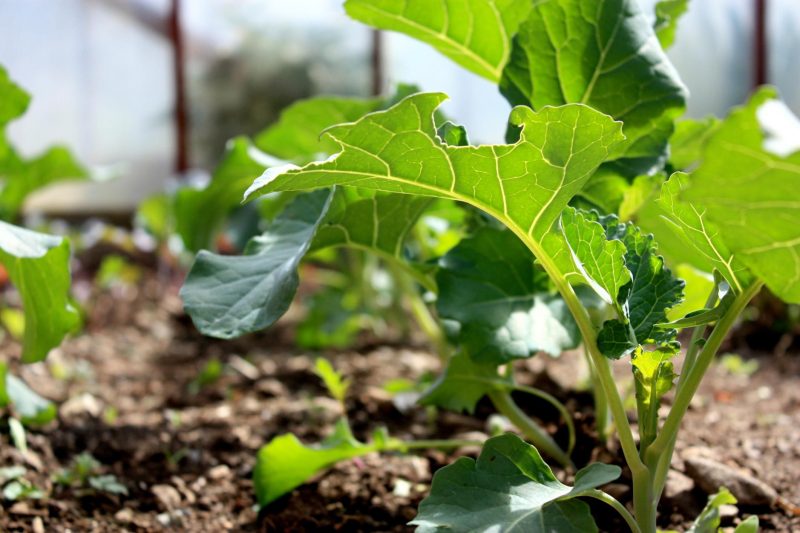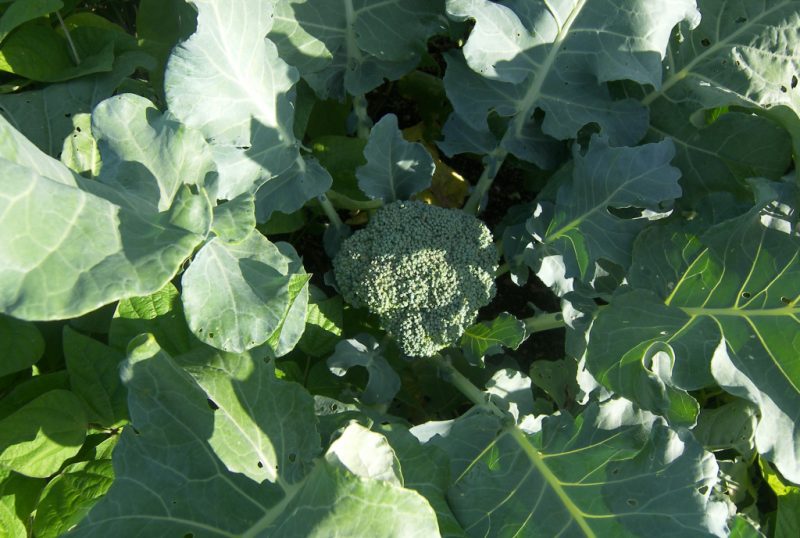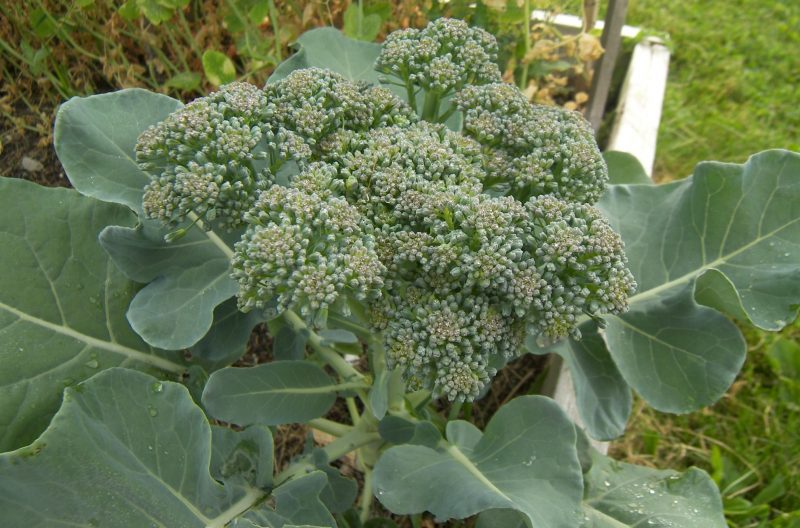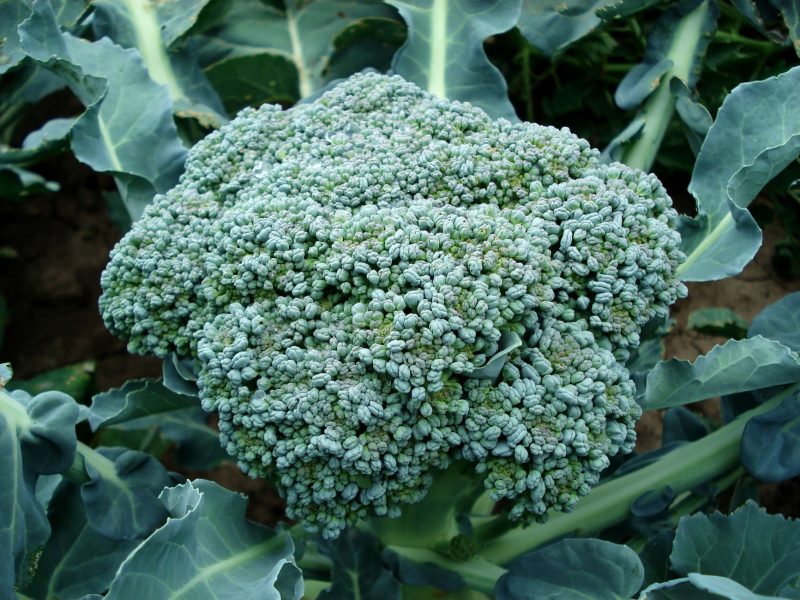Broccoli cabbage, cultivation and care in the open field for which is not much more difficult than for other garden crops, is the genetic precursor of cauliflower. The cultivation of a variety obtained as a result of hybridization in the V century BC, acquired production scale in the XX century. Currently, the high content of vitamins, amino acids and other useful elements has allowed broccoli to take its rightful place in the garden among such long-grown vegetables as carrots, beets, potatoes.
Material Content:
Varieties of broccoli for open ground

Broccoli is represented by two varieties:
- Calabrez is a familiar form with dense inflorescences on a powerful shoot.
- Italian, it is also asparagus broccoli - a vegetable that consists of many shoots topped with small inflorescences.
Broccoli cabbage has about 200 varieties, which are divided into three groups depending on the growing season:
- early
- mid-season;
- late.
Among the most popular varieties stand out:
- Tone is an early variety with a growing season of up to 90 days. After cutting a large dark green head weighing 500 g with medium density inflorescences, lateral processes weighing up to 70 g are formed in a short time.
- A curly head is an early variety, characterized by resistance to disease and adverse climate. Large green heads weighing up to 600 g are suitable for storage.
- Griniya is a mid-season variety with excellent yields. The weight of the central head is up to 30 g.
- The compact - variety stands out for its ability to be used for dense planting thanks to compact round-shaped heads ripening in 100 days.
- Monterey is a fruitful hybrid of late ripening, forming a large head weighing up to 500 g. A distinctive feature is the absence of lateral processes.
Growing seedlings at home
The owners of the gardens broccoli cabbage is grown, as a rule, with the help of self-driven seedlings.
Sowing broccoli seeds - how and when to sow
To obtain seedlings, the seeds are sown in the first half of March as follows:
- Seeds are sorted.
- Selected large seeds are placed for a quarter of an hour in a pink solution of potassium permanganate, after which they are sown to a depth of 1.5 cm in prepared grooves with a distance of 3 cm.
- After seeding, the soil is compacted.
Soil and container for seedlings
To grow seedlings, a container with a depth of 25 cm is selected, on the bottom of which a drainage layer of broken brick is placed. Water-permeable soil with a loose structure for filling the box is prepared from turf soil, sand ash and humus in equal parts.
Seedling Care
After sowing, the tank moves to a room where the temperature is 20 ° C. After germination, the mercury column drops to a value of 10 ° C.

After 7 days, the following temperature is set:
- in clear weather - 16 ° C;
- on cloudy days - 14 ° C.
Seedlings are regularly moistened during the growth period, and air humidity is maintained at a high level.
Caution! Overmoistening of the substrate, which can lead to the development of the black leg, is not allowed.
During this period, it is especially necessary to monitor the growth of seedlings, and not to allow it to stretch. To do this, it should be enough to highlight and flip.
Dive Rules
At two weeks of age, seedlings dive.
During the procedure, it is recommended to adhere to the following rules:
- For convenience, picking is carried out in peat pots.
- For several days, the seedlings are protected from sunlight with paper and kept at a temperature of 21 ° C.
- After adaptation, the seedlings are fed with microfertilizers, which include molybdenum and boron, and the temperature regime decreases - in the daytime to 17 ° C, at night 9 ° C.
- Half a month before planting on the garden, the seedlings begin to harden.
Planting broccoli in open ground
To get a rich harvest, when planting broccoli in the open ground, it is necessary to adhere to organizational and economic and agricultural measures.
Soil and place requirements

For planting seedlings, a sunny section with neutral or slightly acidic soil is selected - 6.5-7.5 points, which is prepared in advance. In autumn, the site is dug up with the introduction of compost at the rate of 4-5 kg per 1 m2.
Advice! If the plot is with acidic soil, then during the autumn digging, ash is introduced.
Then what can I plant?
If on the site last year, green manure, legumes, carrots, potatoes, cucumbers and onions were grown, then broccoli will develop perfectly. Unacceptable precursors for the culture are cabbage, beets, radishes, tomatoes and radishes, after which broccoli can return to the site after 3-4 years.
How and when to plant?
Seedlings in room conditions grow up to 45 days. After 3 pairs of true leaves are formed on the seedlings, they are planted in open ground - approximately at the end of spring.
The procedure is carried out on a cloudy day or in the late afternoon, while:
- Wells are prepared according to the scheme 35x60 cm.
- Complex mineral fertilizers up to 10 g are added to each well, which are then mixed with the soil.
- Seedlings are placed in the landing pits and sprinkled with soil.
- The near-trunk area is compacted and watered abundantly.
Outdoor Care for Broccoli
Growing broccoli in the garden involves a comprehensive care, allowing you to get a rich harvest.
Lighting

In the initial phases of development, culture needs shelter from the scorching sun, which is created with the help of spruce branches.
Loosening and hilling
Soil in the basal area loosens to a depth of 7-8 cm.
Hilling broccoli is carried out twice:
- 3 weeks after transplanting;
- after 10 days after the first hilling.
Advice! For convenience, loosening should be carried out a day after watering.
How to water broccoli properly?

Broccoli need a systematic and plentiful watering, in which the land does not have to be constantly wet. Before the onset of heat, hydration is carried out once a week. But if the temperature exceeded the value of 25 ° C, then the frequency increases.
Important! The plant can be watered through foliage with the help of evening spraying, which broccoli needs strong heat.
Fertilizing and fertilizers

To increase productivity, the crop is fed three times per season:
- The first fertilizer application in the form of organic matter is carried out half a month after transplanting seedlings in open ground.
- For the second top dressing, which is carried out 2 decades after the first, saltpeter diluted in water at the rate of a matchbox of agrochemical per 10 liters of water is used.
- At the beginning of the formation of inflorescences, cabbage is fed with phosphorus-potassium fertilizers with a small addition of nitrogen - 40 g of superphosphate, 10 g of potassium sulfate and 15 g of ammonium nitrate per 10 l of water.
Advice! If it is necessary to stimulate the formation of lateral processes after cutting the central head, then 20 g of superphosphate, 10 g of ammonium nitrate and 30 g of potassium sulfate should be diluted in 10 l of water. The application rate is 1 liter per copy.
Pest and Disease Control
Difficulties in growing broccoli cabbage are associated with the defeat of its harmful organisms. Among the pests in the culture, slugs, aphids, cabbage fly, cabbage white and cruciferous fleas are often observed. As protective measures, timely treatment of plantings with insecticides and manual removal of gastropod pests are the most effective. After transplanting seedlings, when the sprouts are especially tender, it is recommended to cover the plantings with covering material, unless, of course, this is not an industrial scale, but a summer cottage. This method is effective against a flea, which is so gluttonous that it can eat culture in one night.
Of the diseases that can develop at different stages of broccoli growth, the black leg, keel, rot, mosaic and peronosporosis stand out. With the onset of diseases, highly infected specimens are destroyed, and the remaining plants are sprayed with fungicides.
Harvesting and storage

To get quality vegetables, you need to know exactly when to harvest. Harvesting broccoli is carried out at the stage of still green dense inflorescences before the appearance of yellow flowers, signaling the unsuitability of eating cabbage in food. This type of cabbage belongs to products with a limited shelf life, therefore, broccoli is not stored fresh for more than 10 days in a refrigerator.
Advice! If you want to feast on your own grown vegetables in the winter, then you can resort to freezing, in which the vegetable retains all its useful qualities.
So, subject to the basic requirements for care, each gardener will be able to enjoy a generous harvest of healthy vegetables.












